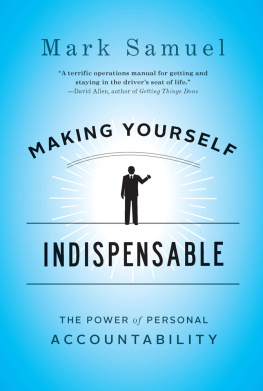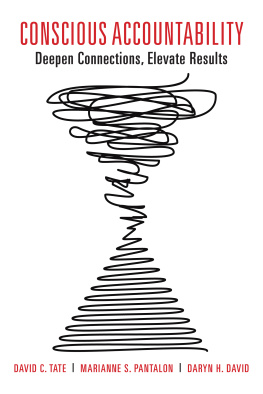Ideas Into Action Guidebooks
Aimed at managers and executives who are concerned with their own and others development, each guidebook in this series gives specific advice on how to complete a developmental task or solve a leadership problem.
| LEAD CONTRIBUTOR | Henry Browning |
| CONTRIBUTORS | Greg Laskow |
| Jennifer Martineau |
| Jim Shields |
| Richard Walsh |
| DIRECTOR OF ASSESSMENTS, TOOLS, AND PUBLICATIONS | Sylvester Taylor |
| MANAGER, PUBLICATION DEVELOPMENT | Peter Scisco |
| EDITOR | Stephen Rush |
| EDITOR | Karen Lewis |
| DESIGN AND LAYOUT | Joanne Ferguson |
| COVER DESIGN | Laura J. Gibson |
| Chris Wilson, 29 & Company |
Copyright 2012 Center for Creative Leadership.
All Rights Reserved. No part of this publication may be reproduced, stored in a retrieval system, or transmitted, in any form or by any means, electronic, mechanical, photocopying, recording, or otherwise, without the prior written permission of the publisher. Printed in the United States of America.
CCL No. 451
ISBN No. 978-1-60491-116-9
Center for Creative Leadership
Post Office Box 26300
Greensboro, North Carolina 27438-6300
336-288-7210
www.ccl.org/publications
pfeiffer.com/go/cclguidebooks

The Ideas Into Action Guidebook Series
This series of guidebooks draws on the practical knowledge that the Center for Creative Leadership (CCL) has generated, since its inception in 1970, through its research and educational activity conducted in partnership with hundreds of thousands of managers and executives. Much of this knowledge is sharedin a way that is distinct from the typical university department, professional association, or consultancy. CCL is not simply a collection of individual experts, although the individual credentials of its staff are impressive; rather it is a community, with its members holding certain principles in common and working together to understand and generate practical responses to todays leadership and organizational challenges.
The purpose of the series is to provide managers with specific advice on how to complete a developmental task or solve a leadership challenge. In doing that, the series carries out CCLs mission to advance the understanding, practice, and development of leadership for the benefit of society worldwide. We think you will find the Ideas Into Action Guidebooks an important addition to your leadership toolkit.
Executive Brief
More and more organizations are putting in a lot of effort to measure engagement and foster empowerment in order to develop a culture of accountabilitytaking ownership of projects, processes, and problems that cut across lines of position and formal responsibility. Whereas responsibility is generally delegated by the boss, the organization, or by virtue of position, accountability is having a sense of ownership for the task and the willingness to face the consequences that come with success or failure. The challenge with accountability is that it is intrinsic: it depends entirely on the individualsor, in some cases, the teamschoice to act with greater accountability. There are three levels of commitment that organizations seek from their employees: engagement, empowerment, and, ultimately, accountability. Through this guidebook you will learn how your organization and its leaders can create a culture that fosters accountability by focusing on five areas: support, freedom, information, resources, and goal and role clarity. You will also be able to evaluate individual leaders in your organization in terms of how well they exhibit accountable behaviors and traits. Finally, you will see how to turn around the factor that is the biggest obstacle to accountabilityfear in the workplaceand turn it into trust.
Being Accountable
Organizations committed to developing their talent are constantly striving to push their managers to accept greater levels of responsibility. Official responsibility often comes from holding a particular position, but more and more managerial challenges require leaders to take initiative without having full authority for the process or the outcomesin other words, to be accountable. Organizations spend a great deal of energy measuring engagement and fostering empowerment to develop a culture of accountability. These efforts are all designed to develop people so they can make sound decisions and be willing to stand behind those decisions. Organizations want people to take ownership of projects, processes, and problems that cut across lines of position and formal responsibility. In short, they are asking for higher levels of personal accountability from their employees.
But accountability is often difficult to define for organizations and even more difficult to articulate to those being developed within a talent pipeline. This guidebook is designed to provide a language and practical tools for developing norms and a culture of accountability in your team, group, or organization.
For the purposes of this guidebook, it is important that some distinctions be made between the terms accountability and responsibility. Often the literature uses these words interchangeably. For this particular model the following distinction will be made:
A person may be delegated the responsibility for a task by the boss, the organization, or by virtue of position. Accountability, however, refers to an acknowledgement and internalization of a sense of ownership for a task and the willingness to face the consequences that come with success or failure.
In leadership roles, accountability is the acknowledgment and assumption of responsibility for actions, products, decisions, and policies, including administration, governance, and implementation within the scope of the role or employment position and encompassing the obligation to report, explain, and be answerable for resulting consequences.
The challenge with accountability is that it is intrinsic, just like engagement and empowerment. An environment or culture that promotes accountability can be fostered, but the end result is totally dependent on the individualsor sometimes, as we will see later in this guidebook, the teamschoice to act with greater accountability.
Much of the accountability literature attempts to make a distinction between people who act with great accountability and people who act as victims of circumstances and who are not willing to own the outcomes and ultimately the consequences of failed actions. The issue, however, may be less about victims and accountable people and more about creating the correct structures, systems, and support that will foster a culture of accountabilityconditions that encourage people to fully own their decisions.
To be sure, most people seem to be more than willing to own success. But that is the crux of the problem: people will attempt to attach themselves to success, but if they are not just as willing to own their mistakes, organizational performance and learning will come to a standstill. Organizations will argue that their accountability issues arise only when people are unwilling to take ownership of failure.
Levels of Commitment
The first thing to understand about the feelings and beliefs concerning accountability is that they are intrinsic in nature. In other words, we can create the conditions to maximize feelings and beliefs of accountability in others, but for the link to work those others must have a sense of accountability within themselves.












